
(圖一) 左為 Roy,右戴白色帽子者為 Brumley 他們曾合作一起製作<G.S. Sultan - Redundancy Charm Study>的裝置版。
當我問 John Brumley 他當前主要的創作方式是什麼時,他說:
“實際上,網站的型態跟呈現的內容改變了我一些想法,人們更傾向於區分數位化的現實世界,或是區別真實世界的虛擬物。我想多加強調兩方(虛擬與真實)的流動性,所以我開始取材許多在現實世界中可以看到的元素,但是以人工數位的方式呈現並加很多設計元素......“
觀看 Brumley 的作品就如同走進電影製片廠一般,場景相似於精心打造出來的電影拍攝現場。 創作者以他的世界觀和美學來構建一個新世界,混合真實世界的風景、3D模型等數位元素混合一起,使人有一種熟悉感而又令人眼花繚亂的視覺效果,而聲音/音樂也正慢慢深入引導觀眾探索這真實與虛擬之間交錯的空間。

(圖二) <G.S. Sultan - Redundancy Charm Study>
Brumley 花費了大約5到6年的時間才決定學習媒體藝術,目前他正在日本筑波大學就讀 充權信息學 (EMP) 博士課程。 其實,他一開始並沒有意料到自己會成為一名媒體藝術家, 他先是獲得加州大學戴維斯分校音樂創作學士,並在加州大學洛杉磯分校獲得媒體設計藝術碩士,被問及為什麼有這樣的轉變時,他說:
“我大學唸的是音樂作曲,在傳統音樂的課程中學習編寫管弦樂和用音樂記譜法來編寫給樂器的音樂,這樣的練習像深入古典傳統或當代音樂傳統的形式和結構,但有個問題是我對電子音樂和即興創作很感興趣,我陷入了設立在大學中的廣播電台,發現了更多有趣的事情。 在大學裡,有一個獨立的部門,我經常沈浸在那裡,並且非常專注於實驗音樂、電子音樂,特別即興創作,但當時要改變學系已經太遲了,所以基本上,我只是完成系上該做的事,然後花了很多時間去做其他事情。
在畢業之後,我仍還繼續製作大量的音樂。當時我住在一個房子,室友跟我經常在自家客廳演出,在這個音樂社群中,聽很多樂隊、組成自己的樂隊、製作、 巡迴演出等等,幸運的是,我周圍的人們能夠花時間,也有能力跳脫他們思維框架,做很多相對於目前他們的音樂的挑戰與實驗。 這就是我進入加州大學洛杉磯分校之前的五、六年,一段非常愉快的時光,僅是花費許多精力專注於音樂相關的事情上。
發現 UCLA 的學程是一個偶然,然後我和一個在那裡教書的老師 Casey 會面,我告訴他我很緊張,因為我的背景都是關於聲音/音樂,我不知道是否會能適應,但後來進展似乎相當順利,我改變了創作手法,不再僅僅是關於聲音/音樂了,發現了自己可以在不同的定位上發展。 我仍然可以表演以前的作品(UCLA計劃之前的時間),但我看到了我和電腦之間的動態關係,並思考如果我在一個沒有觀眾觀看的狀態下,不斷處理這種人與電腦互動的狀態,會出現怎麼樣的可能?”
Brumley 不僅在創作聲音能力出色,而且視覺設計和雕塑風格也有獨到之處。一件令人印象深刻的錄像作品 <G.S. Sultan - Redundancy Charm Study> ,影像出於 Brumley 之手,聲音則是由 G.S. Sultan 製作,該視覺似於中國傳統水墨風景的數位版本。風景水墨畫經常是由畫家進入山林中速寫、草稿,再返回工作室時,將草稿重新構圖、組織在畫面上,而 Brumley 的 是從電腦、平板和手機導航到虛擬網絡世界,作品以許多子畫面呈現他的旅程,其中一個在錄像作品呈現的壯觀,是個虛擬山水,卸下一塊大型布幕,投影上一個在操作手機軟體的過程。但是這個場景並沒有持續很長的時間,下一個場景突然跳出來。作品啟發人們思考生活如何跳躍在多個數位介面和虛擬世界之間。
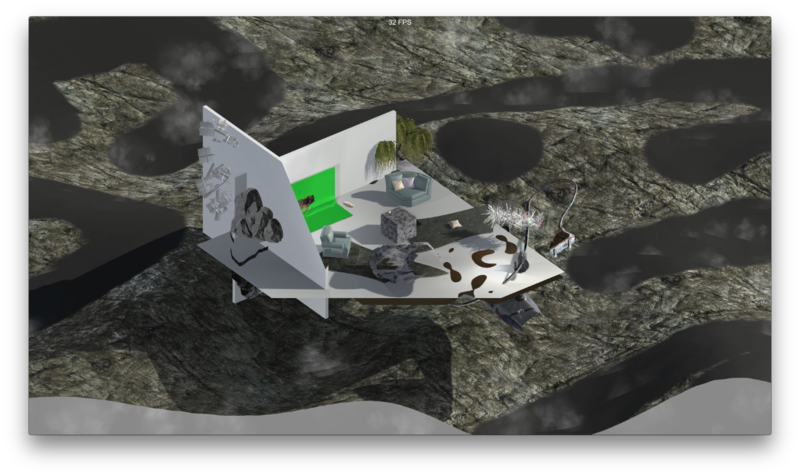
(圖三) <G.S. Sultan - Redundancy Charm Study>
當展覽中展示 <ceceLimbic_PNTJMBS> 和 <yoyoVal_HD / pedestal> 時,他將聲音,影像,裝置,雕塑,建築元素結合在一起創造出一個藝術場域。他創造的空間不僅給人一種舒適的氛圍去享受錄像作品,還為觀眾建立了一種物理的連接讓觀者沉浸在被建造的影像風景中。
“我想做出讓人們重新思考與物件互動的方式,那些對他們來說是最親密的物體,像電話、電腦等等。其實,我的一些作品有一個簡單的哲學,<ceceLimbic_PNTJMBS> 與 <yoyoVal_HD / pedestal> 我想以一種非常類似於風景、攝影的方式來處理,並將桌布畫面放置於建築的一部分,像是放置在一個大型的山谷這樣。在這種情況下,我思考如何啟發人們對他們每天都在使用的東西進行不同的思考,就不僅僅再是開機去執行程式跟關機,人們是如何想這些程式怎麼讓人進入某個系統中的。
使用電腦時和特別是當使用鼠標或滑動螢幕時,這些類型的移動和互動是我想多加強調的。 這些運動在我們使用電子產品的過程中非常普遍,人們認為這是理所當然的,但對我而言,人在拖動在螢幕上的一個視窗時,有很多正在發生的過程,像一個編舞的過程。 我非常喜歡這個想法,能量通過身體進入系統和進入像素, 就像作品 <yoyoVal_HD / pedestal> 一樣,我想提高一個很普遍的動作的層級,並讓人們在聲響中冥想,像是一些白噪聲,水,風,一個讓人放鬆的網站。”
Video : cece___tallScreen--(screenshot-render)
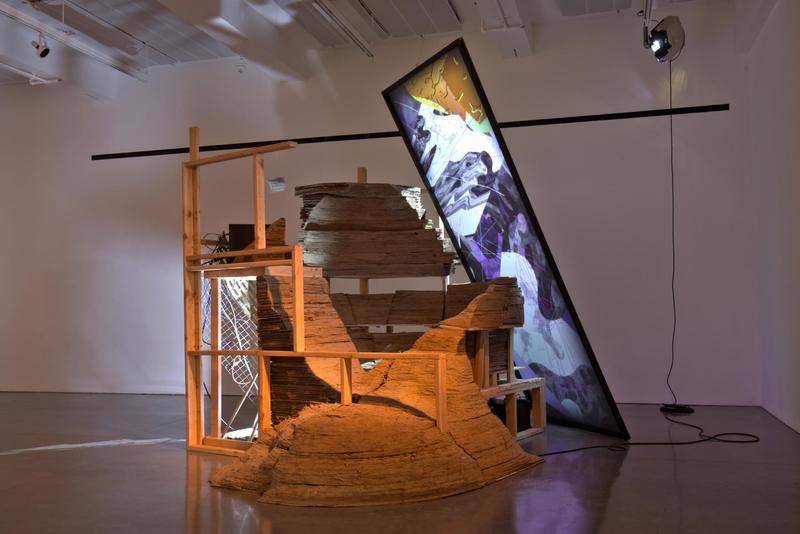
(圖四) <ceceLimbic_PNTJMBS>
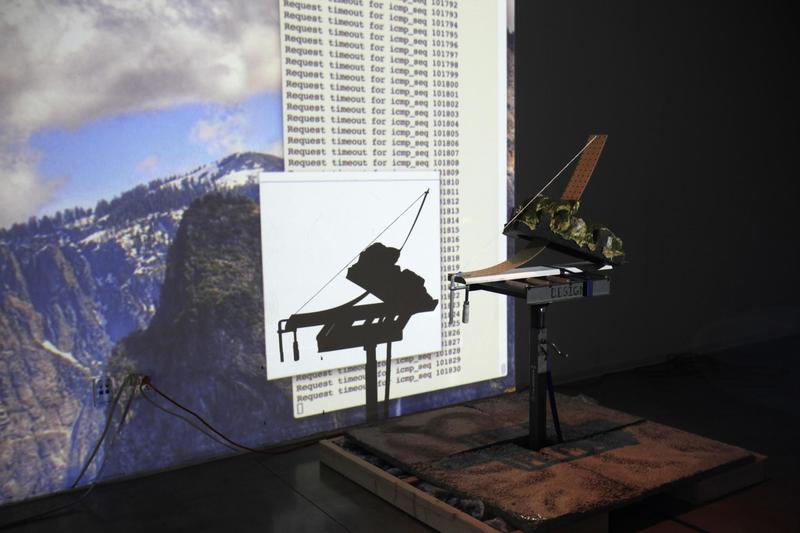
(圖五) <yoyoVal_HD / pedestal>
Brumley 的另一個錄像作品也值得一提 - <Intermediate 8>。 在作品中,聲音不斷地從遠處到達近處,或者首先集中,然後擴散開來並混合人聲。 視覺上充滿了來自網路的螢幕畫面、訓息、圖像和影片剪輯,對他是如何製作的以及關於聲音、影像的想法進行了描述:
“當時我在研究聲碼器 (vocoder) 技術,並試圖將不同的音頻源整合在一起。那時我受到了Paul De Marinis的專輯 <Music as a second language> 的影響。我猜整個專輯應該是使用語言教材或類似音源,然後他有不同的解析方式,或者他直接調製人聲等等。在那段時間裡,我還花費了大量的時間在網路上和嘗試調和所有的媒體。對於影像部分,我試圖創建自己的網路反饋系統,例如:我正在製作可以託管於Google Hangout video的網站。我開了Google Hangout,然後將自己的螢幕畫面轉播到其中,然後我打開那個網站可能可以產生有四、五個螢幕,最後我會將該把這些影片放入3D空間(軟體),並再度移動它們時進行轉播。我一遍又一遍地重複,並將它們餵入新的系統。
這也是使用電腦製作影像作品的一種做法,因為我從未正式受過程式訓練甚至是電子音樂的製作。即使現在我對編碼熟悉了些,但我不想編寫程式來生成聲音,我的做法更偏向是編寫程式來幫助我處理編制現有的聲音,例如:來組織範例,或者更多用於在網路上進行探索的目的,創造我自己的進行收集的介面,它改變了我取樣的方式。”
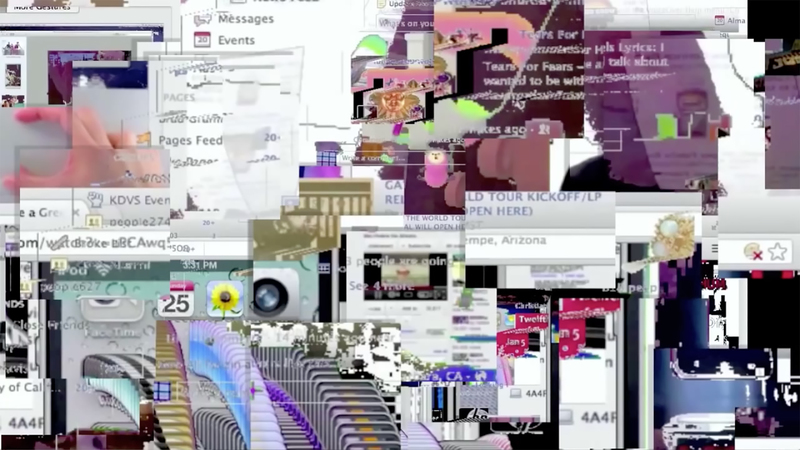
(圖六) <Intermediate 8>
藝術家網站:http://johnbrumley.info/
*在2016年做了這個訪談紀錄,直至今日才被書寫出來。
英文原文:
Media Artist John Brumley’s Digital Landscape
When I asked John Brumley what is his main idea of his current artistic approach, he said:
"Actually, everything on the website been kind of changed my focus a bit to be more towards this what people would call a distinction between the digital in the physical world or virtual in the real. And I think I want to emphasize a lot of like the fluidity between the two, so I started wanting to take a lot of the digital artifacts that you see in the physical world or a lot of the design elements... "
Watching Brumley's work is as like walking into a well-built movie scene in the film studio. The artist uses his worldview and aesthetics to construct a new world. He mixed the real world scenery with the elements and 3D models from digital world. It makes people feel that it is a familiar but dazzling visual, and sounds/music are slowly and profoundly leading audiences to the deeper exploration of a world between real and virtual.
It took Brumley around 5 to 6 years to decide to study a media art and currently he is studying a Phd Program in Empowerment Informatics (EMP) at University of Tsukuba, Japan. Actually, he did not mean to become a media artist in the beginning. He obtained his bachelor degree from UC Davis in Music Composition but finished his master degree in Design Media Arts program at UCLA. Been asked about this major change, he said:
“I did my undergraduate degree that was a music composition. And I was in traditional courses and learning about writing orchestration and notated music for acoustic instruments. It's like going deeper into the classical tradition or contemporary music tradition forms and structures. From the problem I had with that was I was interested in electronic music and improvisation, so I sort of fell into a radio station that was going on in the university. I found a lot more interesting things going on there. In the university, there was a separate department that I was just emerging there and also really focused on experimental music, electronic music and especially improvisation. It was too late to change department, so I was already like basically about to finish but I spend a lot of time doing the other things.
After that, I basically was still making music quite a lot and living in a house where we're putting on concerts in our living room and I was living in a music community, listening to a lot of bands, group up own band, making touring and etc. Fortunately, people around are able to take the time and also have the ability that shifts their mind frame of what kind of sounds they were making or what kind of things they were doing. It was like a very nice time of just being having a lot of energy and concentrated on music. It was maybe five or six years before I entered the UCLA program.
I found out UCLA program accidentally. I had a meeting with Casey who is teaching there. I told him I was nervous because my background is all sound and I don't know if I'm going to fit in, but later, it seems going well. I also changed my practice to not just be about sound anymore. I found myself in the different location. I could still perform in that works (the time before UCLA program) but then I saw the dynamic between me and my laptop, and thinking about if I'm constantly working with this what kind of things are emerging and doing it without the intention of having an audience around. ”
Brumley not only has an outstanding ability on sound but also has special styles of visual design and sculpture. An impressive video <G.S. Sultan - Redundancy Charm Study> was produced by Brumley and the sound was made by G.S. Sultan. The video resembles a digital version of a traditional Chinese landscape ink painting, which is created by a painter who travels into mountains and makes sketches of views. When the painter returns to the studio, the image is reorganized on a paper. Brumley is as like navigating from computers, tablets, and mobile phones to the virtual network world. His work presents his journal with many sub-screens. One of the spectacular parts is a realistic landscape matching with a virtual landscape and then a large projection screen drops down. The video projected on the screen is an operating process of a mobile phone software. But the scene does not last long and the next scene jumps in out of a sudden. It is very intriguing to make audiences to think how life keeps switching among several digital interfaces and virtual world.
When <ceceLimbic_PNTJMBS> and <yoyoVal_HD/pedestal> were presented in the exhibitions, he combined sounds, videos, installations, sculptures, architecture elements together to create an artistic domain. The space that he created not only gave a comfortable atmosphere to enjoy the video and audio works but also built out a physical connection for audiences to immerse into the video landscape.
“I'd like to make things that would let people reconsider the ways that they interacted with the objects. The objects are most intimate to them and to me seemed like the phone, computer and etc. that people have the way and things currently. Actually, some of the pieces have a simple philosophy. For example, <ceceLimbic_PNTJMBS> or <yoyoVal_HD/pedestal>. I wanted to treat this in a very like landscape, photographic way and put paint a desktop in a space where is part of the architecture, a large-scale valley, this kind of situation. In that case, it looks very much like how can I get people to really think differently about the things that they're using every single day, how can you rather than opening a program and closing it, and how will people consider the programs make people in a certain system.
Using a computer and especially when you're working with a mouse or swiping the screen, these kinds of movements and interactions that I want to emphasize. The movements are so prevalent in how we work with computers and people take it for granted. For me, like when someone drags a window across the screen, there's like a quite a lot of processes that are happening. It's similar to choreograph movement. I really like the idea of the flow of energy through your body and into the system and into the pixels. Like the work <yoyoVal_HD/pedestal>, I guess I just wanted to raise possibly mundane activities and have people in meditating on them with meditation sound like white noise, water, wind, a relaxation on websites.”
Another audio-visual work from Brumley is also very worth to mention - <Intermediate 8>. In the work, sounds either constantly come from far to near position or first concentrate and then spread and mix human voices. The visual is full of screens, messages, clips of images and videos from the internet. He also has some description about how he made it and ideas of sound and video:
“At the time, I was really exploring vocoder techniques and trying to translate or merge different audio sources in together. I think, at the time, I was influenced by Paul De Marinis' album <Music as a second language>. I think pretty much the whole album this like using Language tutorial or kind of audio that he took, and then he had different forms of analysis that allow the audio to control lighters and sizes. Or he was directly modulating the vocals or anything like that. During that time I was also spending a lot of time online and trying to reconcile all of the media. For the video part, I was trying to create my own internet feedback systems, for example, I was making websites that would host Google Hangout video. I start a Google Hangout and then broadcast my own screen into it. Then, I open that website maybe four or five screens and then I would put that video into a 3D space and also be broadcasting while moving. I did it over and over again, and feed it into some new systems.
It is also a practice for using computers to make audio-video artwork because I've never been trained as like a programmer even with doing electronic music. Even now, I'm pretty familiar with coding but I don't feel like writing code to generate sound. My practices are more about writing code to help me work with existing sounds, for instance, writing code to make or organize samples, or more for navigating and exploration purposes on the internet, move around them as like creating my own interfaces for collection. It changes the way that I go about sampling.”
Artist website: http://johnbrumley.info/
*The Interview was made and recorded in 2016 and was written down currently.

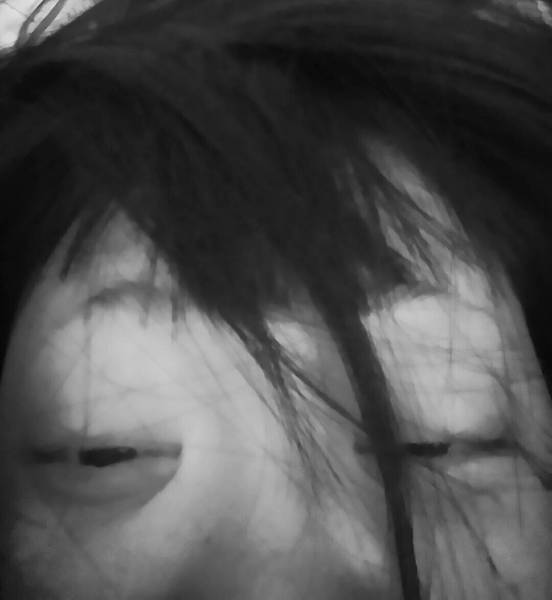
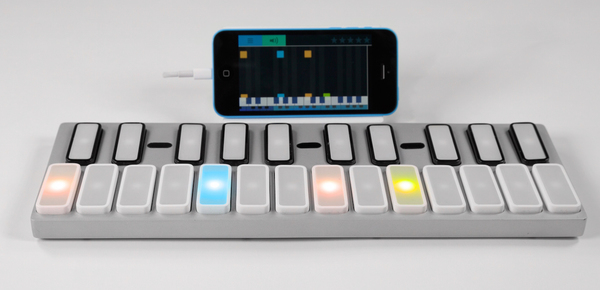
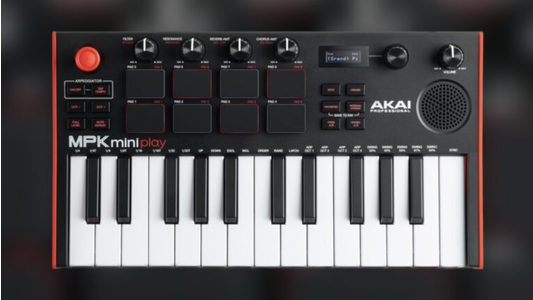
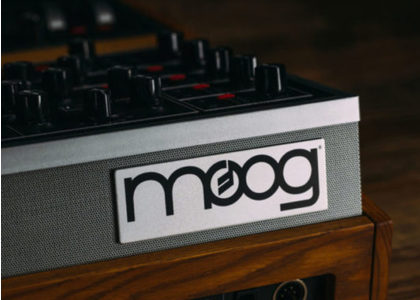
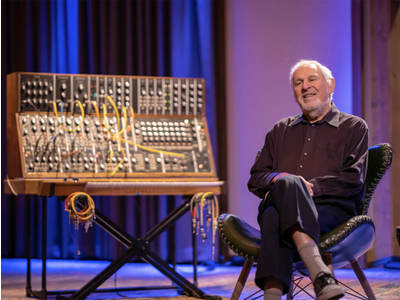


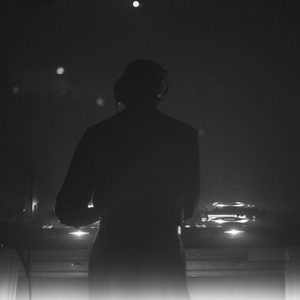
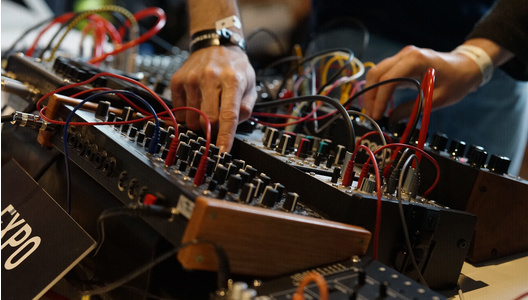
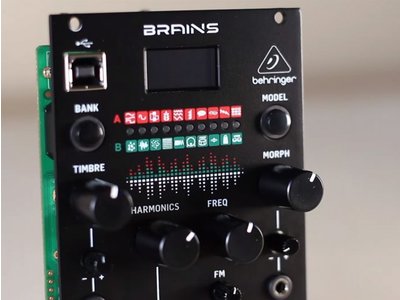

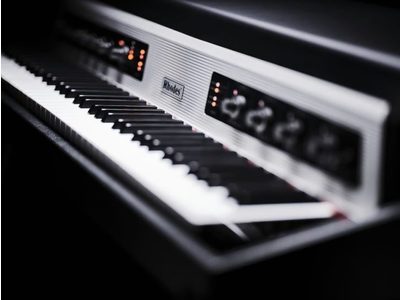



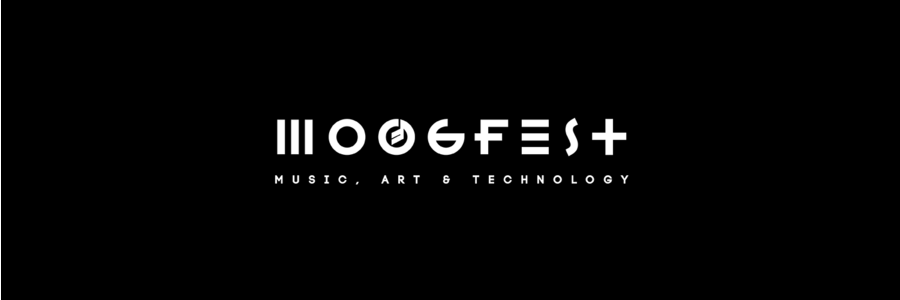

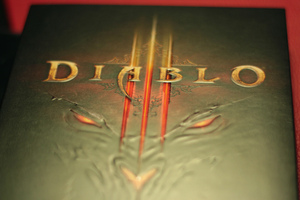
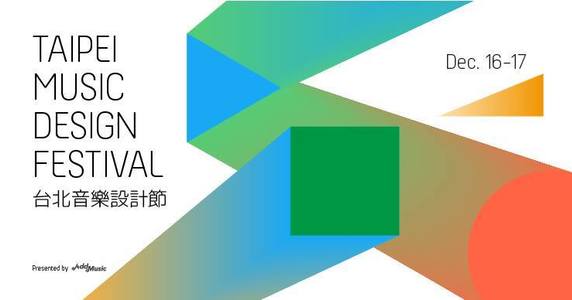

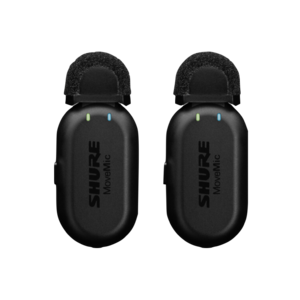


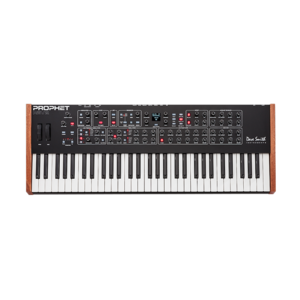

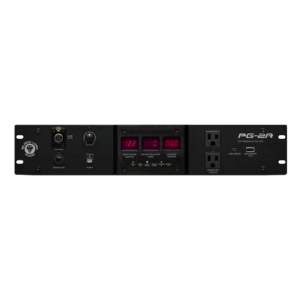
討論區
目前尚無評論